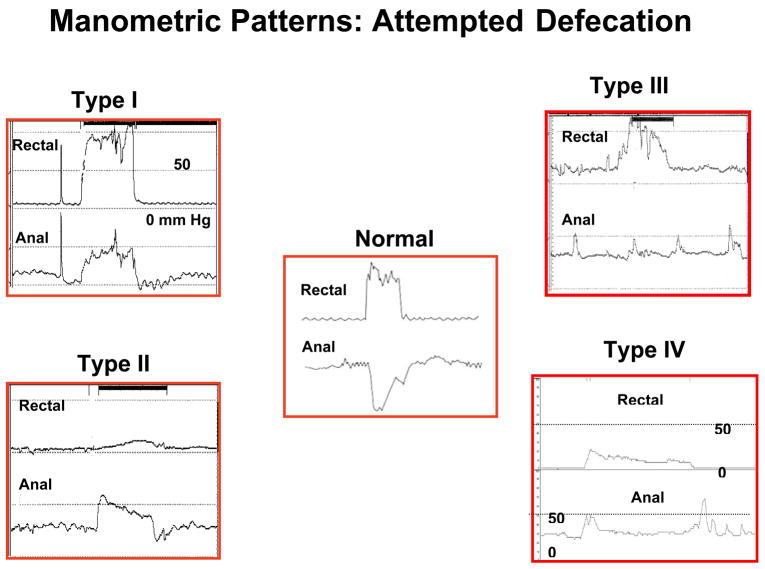Fig. 2.
This series reveals manometric patterns that are commonly seen during attempted defecation in a normal healthy individual (central panel) and in patients with dyssynergic defecation. They were obtained after placing a multisensor solid state manometry catheter into the rectum: changes from a single sensor in the rectum and one from the anal canal are shown. In the center panel, it can be seen that the subject can generate a good pushing force (increase in intra rectal pressure) and simultaneously relax the anal sphincterl. This is a normal pattern of defecation. In contrast, patients with dyssynergic defecation exhibit one of four abnormal patterns of defecation. In type I dyssenergia, the subject can generate an adequate propulsive force (rise in intra rectal pressure ≥40 mmHg) along with paradoxical increase in anal sphincter pressure. In type II dyssynergia, the subject is unable to generate an adequate propulsive force; additionally there is paradoxical anal contraction. In type III dyssynergia, the subject can generate an adequate propulsive force but there is either absent relaxation (a flat line) or incomplete (≤20%) relaxation of anal sphincter. In type IV dyssynergia, the subject is unable to generate an adequate propulsive force together with an absent or incomplete relaxation of anal sphincter.

